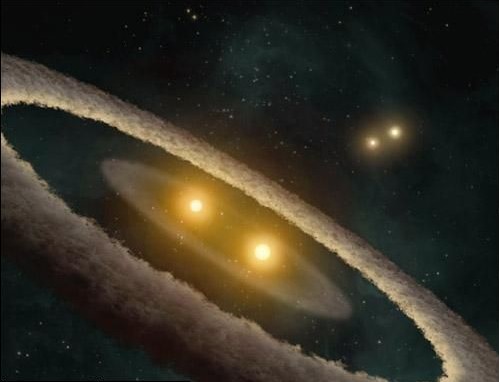Chicxulub is buried under two to three kilometers of limestone and mostly offshore, which makes it difficult to study, Anderson went on, "while Manson is really quite accessible. It's because it is buried that it is actually comparatively pristine."
“奇克休留布大坑在兩三公里的灰巖深處,而且大部分在近海。這就使得研究工作很困難,”安德森接著說,“而曼森大坑是完全進得去的。它被埋在地下,處于比較原始的狀態。”
I asked them how much warning we would receive if a similar hunk of rock was coming toward us today.
我問他們,要是今天有一塊類似的巖石朝我們飛來,我們有多長的警報時間。
Oh, probably none, said Anderson breezily. "It wouldn't be visible to the naked eye until it warmed up, and that wouldn't happen until it hit the atmosphere, which would be about one second before it hit the Earth. You're talking about something moving many tens of times faster than the fastest bullet. Unless it had been seen by someone with a telescope, and that's by no means a certainty, it would take us completely by surprise."
“哦,很可能沒有,”安德森輕松地說,“要等它發熱肉眼才看得見,而它在接觸大氣以前是不會發熱的。到了那個時刻,大約再過一秒鐘它就要撞擊地球。它的速度比最快的子彈還要快好幾十倍。除非有人用天文望遠鏡發現它,而那根本是沒有把握的事,它會完全對我們來個突然襲擊。”

How hard an impactor hits depends on a lot of variables—angle of entry, velocity and trajectory, whether the collision is head-on or from the side, and the mass and density of the impacting object, among much else—none of which we can know so many millions of years after the fact. But what scientists can do—and Anderson and Witzke have done—is measure the impact site and calculate the amount of energy released. From that they can work out plausible scenarios of what it must have been like—or, more chillingly, would be like if it happened now.
一個物體撞擊地球的力量,取決于許多變數──其中包括沖擊物進入大氣的角度,它的速度與軌道,是迎面相撞還是從斜里相撞,以及它的質量與密度──這一些,事后幾百萬年我們都無法知道。但是,科學家們能做的是──安德森和威策克已經做的是──測量撞擊現場和計算釋放出的能量。根據那些結果,他們可以推斷出當時肯定是什么情景──或者更令人寒心地說,如果現在發生的話,將會是什么情景。
An asteroid or comet traveling at cosmic velocities would enter the Earth's atmosphere at such a speed that the air beneath it couldn't get out of the way and would be compressed, as in a bicycle pump.
當一顆以宇宙速度飛行的小行星或彗星進入大氣層的時候,它的速度如此之快,下面的空氣來不及讓路,會像自行車打氣筒里的空氣那樣被壓縮。












